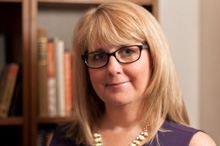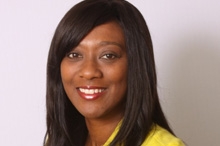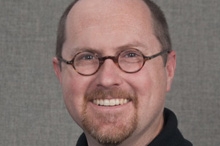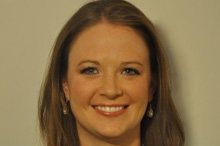Champions of Change Blog
How Technology Levels the Playing Field
Posted by on November 26, 2013 at 5:28 PM EDT
Mark Coppin is being honored as a Connected Educator Champion of Change.
One of the driving forces in my life and something that I am very passionate about is accessibility. To me, it means more than accessibility; it is accessing abilities. It is finding the tools that allow diverse learners the opportunity to access their education, their world, and their dreams. Today’s technologies are opening up a world of possibilities for students with diverse learning needs. Technology is leveling the playing field and providing students with opportunities that were difficult or impossible to provide only a few years ago. It allows us to look beyond the disability and focus on the ability. I am honored to be selected as a White House Champion of Change as it will provide me with a broader platform to spread the word on how providing equal opportunities for all learners can transform lives.
I have been the Director of Assistive Technology at the Anne Carlsen Center for over 25 years. The Anne Carlsen Center is a private non-profit center located in North Dakota that serves persons of all abilities throughout the state and region. I started out as a teacher at the center, and early on I realized the power of assistive technologies in providing opportunities for students with special needs. Throughout my professional career, I have looked for various ways to provide opportunities for people to realize their full potential. I helped host a summer technology camp during which kids from across the state who wouldn’t typically be accepted into a traditional camp are provided with access to all types of assistive technologies. Once they are able to utilize the devices, we provide them with opportunities to explore music, art, photography, and videography. We also give them the chance to experience typical camping activities such as campfires, pontoon rides, and swimming in a lake.
As an Apple Distinguished Educator of 2009, I speak to professionals throughout the world about the impact technology has to help people access their abilities, transform lives, and provide limitless opportunities. I believe that we can create meaningful change by educating people on inclusive design and working with software and hardware developers to include universal design features in their products. This will create an environment and culture that provides equal access for all learners. By creating learning environments where people of all abilities have equal access to tools, no matter what their ability, we can maximize learning and provide opportunities for students to realize their full potential. The motto at the Anne Carlsen Center is: “Nurturing Abilities and Changing Lives.” This is the approach that I take with everything I do.
I believe that technology can help level the playing field and provide opportunities for all persons. When everyone is given the same opportunity this can change attitudes, perceptions, and culture. We are putting tools into the hands of our students and allowing them to become, not only productive participants in our future workforce, but also mentors, future leaders, and role models. They will be able to change attitudes and affect change. Every day I am inspired by individuals who have overcome barriers; today’s technologies allow them more opportunities to do so.
Mark Coppin is the Director of Assistive Technology at the Anne Carlsen Center, a non-profit center serving persons with disabilities located in Jamestown, ND. He is also an Apple Distinguished Educator.
Learn more about EducationLibrarians Sharing New Ideas Across the Globe
Posted by on November 26, 2013 at 5:25 PM EDT
Carolyn Foote is being honored as a Connected Educator Champion of Change.
Providing our students opportunities to be prepared for the future is crucial. Across the nation, thousands of dedicated educators and librarians are leading the charge to help students investigate, create, collaborate and communicate effectively, and to reach beyond the walls of their own schools.
I am honored to represent a large community of connected librarians across the nation who play a uniquely significant role in assisting teachers as they become comfortable with new technologies, and who link teachers and students with the tools and resources that help them become “connected” learners. While librarians have always been resource mavens and curriculum specialists, our roles have broadened to include the technology tools and strategies that prepare our students for an always connected future. That can mean connecting our ASL students via Skype so they can teach a Canadian student sign language, hosting a robotics makerspace in the library, building a list of web resources for our Vietnam memorial project, or discovering new devices that will aid student research.
When tablets entered the commercial marketplace, for example, I was eager to pilot them in the library in order to determine their efficacy for our teachers and students. As an early adopter, I began with just six tablets to gather information on their usefulness for student learning both within the library and the classroom. Three years later, with the dedication of a tribe of people, we are now a one-to-one tablet district k-12 and are entering our third year hosting an annual conference for tablet users across the country.
As a librarian (in concert with technology staff), I supported the initiative in many ways: redesigning the library to include a tech “help desk”, building lists of appropriate apps, developing projects with students and teachers, and documenting our initiative on a campus blog. I have networked with librarians around the country as they grapple with similar issues from e-books to library redesign; even when we redesigned our own library six years ago, many of the future-friendly features that make our library a vibrant hub were inspired by other colleagues online.
As a librarian, I play a vital leadership role with my unique expertise about research and literacy. But I and other librarians cannot develop our skills in a vacuum. Wired librarians across the globe have banded together to build resources for one another, like the Teacher Librarian Virtual café. This program, led by volunteers, hosts monthly online programming and supports weekly Twitter chats. I also engage with Texas librarians during the weekly Texas Library Twitter chat and network during national events like the Connected Educator month with Secretary Arne Duncan, and the free K12online Conference, which gave me the first thrilling taste of connecting with educators globally.
These ongoing connections have imbued my own practice with the most empowering professional learning I have ever been a part of; I can wake up chatting with educators in Australia, connect with colleagues on campus during the day, and go to bed having chatted with colleagues on the West Coast. Rather than work alone, librarians have grown wide networks of colleagues that both support and challenge us, and we, and our schools, are better for it. For me, this incredible honor to be named as a Champion of Change is a recognition not only of my own work as a “technolibrarian”, but more importantly of all of my connected colleagues and their incredible dedication to better our profession. We care fiercely about educating our students and about moving our schools forward. And these connections make our work much richer. Thank you for recognizing that “connecting works” and thank you for this honor.
Carolyn Foote is the district and high school librarian at Westlake High School in Eanes Independent School District in Austin, Texas who is fascinated by the intersection of technology and libraries.
Learn more about EducationTraining Students to Use Technology Creates Real Potential
Posted by on November 26, 2013 at 5:23 PM EDT
Daphne Bradford is being honored as a Connected Educator Champion of Change.
On February 6, 1999 I had the pleasure of interviewing civil rights icon Rosa Parks for a Black History Month segment to be aired via Bailey Broadcasting Services nationally syndicated radio network. During this “I can’t believe I’m talking to Rosa Parks” interview, I was amazed to hear about how she learnedto email in her 80’s. Inspired by this conversation, I established the grassroots non-profit Mother Of Many (M.O.M.), on August 12, 1999. America was on the brink of entering the 21st century and I had a dream of making history by bridging the digital divide between the civil rights generation, the hip-hop generation, and their children.
Developing Digital Media Geniuses became Mother Of Many’s inaugural technology program. Designed to provide technology training to economically disadvantaged high school students, the program prepares students for 21st century college and career opportunities. The curriculum was first implemented in Watts, CA at Locke High School where I was hired as a Professional Expert to train at-risk students to produce radio news shows. Watching students who were failing math, science, and English re-engage in education by earning certifications in industry software programs Final Cut Pro and Logic Pro was awe-inspiring. In recognition of this, work Apple selected me as a 2007 Apple Distinguished Educator upon securing Locke High School as the corporation’s first Authorized Training Center for Education within the Los Angeles Unified School District. This was the same year a hopeful Senator named Barack Obama began his presidential campaign and the same year the iPhone began changing global communication.
I realized then that technology had a ubiquitous behavior that would become uncontrollable for educators if they did not connect with it and become friends. Providing Internet access space for all students, undocumented and citizens, was a necessity. Looking into the eyes of a reformed student encumbered by a house arrest ankle bracelet while he’s telling me “Ms. B, you know you can help save me,” reinforced my goal to create a scalable model for schools across the nation. This desire led me to partnerships with KABC-7 News and KNBC-Los Angeles digital news. Some of my students earned internships at the Ogilvy and Mather Advertising agency. Expanding my efforts, the Los Angeles Urban League contracted me to train Crenshaw High School students’ podcast engineering. Using their new skills, these advanced students then published the book, Journey to the White House, and taught podcasting classes at the Cal State Dominguez Hills Osher Life Long Learning Institute.
Always looking for new opportunities, I was searching around and discovered Microsoft’s Innovative Educator (MIE) program, which honors teachers for effectively using technology in their curriculum to increase student engagement and success. Upon applying, Microsoft selected me as a 2011 Innovative Educator and 2012 MIE Trainer. This opened the science, technology, engineering and math (STEM) door for Mother Of Many students to learn coding and game design. The Crenshaw Digital Media & Gaming Team became the first group of Los Angeles Unified School District (LAUSD) students to publish a game, Going Banana’s for Health, in the Windows 8 App Store. M.O.M. also partnered with Dorsey High School’s Math and Science Magnet Academy to expand student’s interest in STEM related careers. It’s an honor to be selected for Mother Of Many students and partner school principals as a Connected Educator Champion of Change. Thank you.
Daphne Bradford is the founder and president of Mother Of Many (M.O.M.), a grassroots organization dedicated to bridging the digital technology and STEM career divide with scalable models of success for schools across the United States.
Learn more about EducationTeachers Learn from Technology Too
Posted by on November 26, 2013 at 5:20 PM EDT
Todd Nesloney is being honored as a Connected Educator Champion of Change.
When I first received the email saying I had been selected as a White House Champion of Change for being a connected educator, I sat in pure disbelief. To this day, I still can’t believe that this is a reality. I am a teacher in a tiny town in Texas, who never dreamed I would ever set foot in the White House, much less be recognized for my work. If you would have asked me a year and a half ago what a “connected educator” was, I am sure I would have told you that it was a teacher who knew how to plug in a computer!
Now my world is completely different. Ever since getting “connected” a year and a half ago, my sphere of influence and my depth of learning have increased dramatically. I can still remember the day that my former Assistant Superintendent walked into my classroom and convinced me to give Twitter a try. At first, I was completely against Twitter, but I soon realized it would change my perspective more than I could have imagined.
When I became a connected educator, I learned from others all over the world and began to form real meaningful relationships with other educators. This recognition is a reflection, not just of me, but the connections I’ve made and the relationships I’ve built. I’ve always said that I am only good at what I do because I surround myself with the most incredible, inspirational, boundary pushing, and thought provoking educators out there. Educators whose hearts are in it for the betterment of the kids. Educators who on a daily basis challenge my thinking, listen to my rants, provide me with encouragement, and most of all, supply an endless amount of innovative ideas.
So in writing this, I have to give an enormous amount of credit to my PLN (Personal Learning Network). Without them I would never have experienced any of the opportunities that have been placed before me and would not be the teacher, or person, I am today. More importantly, it is my students who benefit the most from the monumental amount of learning that I undertake every day because I chose to become a connected educator. I challenge YOU, to step outside your comfort zone, take the leap, and begin to connect today!
Todd is a fifth grade teacher at Fields Store Elementary in Waller, Texas. In addition to teaching Todd is one of the National School Board Association’s “20 to Watch”, one of the Center for Digital Education’s “Top 40 Innovators in Education”, a Classroom Champions Educator, a Flipped Classroom Certification Instructor for Sophia.org, part of the Remind101 Teacher Advisory Board, co-founder of “The 3 Tech Ninjas”, co-author of the book “Flipping 2.0”, and author of the children’s book “Spruce & Lucy”.
Learn more about EducationUsing Technology to Reduce Recidivism of Prisoners
Posted by on November 26, 2013 at 5:18 PM EDT
Brian Walsh is being honored as a Connected Educator Champion of Change.
Washington State spends on average $32,000 per year to incarcerate one offender. Reducing the recidivism rate- the number of offenders who return to prison after release- is a vital part of correctional public policy.
Correctional education is one of the most effective tools to lower the recidivism rate. A recent meta-analysis by RAND found that offenders who participated in education programs while incarcerated were 43% less likely to return to prison and 13% more likely to become employed. The Washington State Institute for Public Policy has found that adult basic education, post-secondary education, and vocational education programs, have a net return to taxpayers and society of at least $13 per $1 spent. Prison education programs help offenders prepare for reentry and are effective tools in reducing future crime.
As director of correctional education programs at Peninsula College, I lead our community college’s efforts to prepare offender students to be successful workers and citizens when they are released. For over 30 years our college has partnered with the Washington State Department of Corrections to create meaningful programs in high-demand occupations. Washington State community colleges have been innovative partners for change in corrections education by providing access to quality adult, post-secondary, and vocational education that is responsive to workplace demands. However, as society has become more interconnected through the Internet and as technology has changed education, corrections education has struggled to adapt.
For reasons of public safety and institutional security, most states do not allow adult offenders to have access to the Internet’s readily available resources. My faculty and I have worked to replicate those resources by collaborating with agencies that provide open educational materials to the public. We have created our own disconnected Internet that includes Khan Academy Lite, an offline version of Khan Academy; courses from the National Repository of Open Resources; and the Correctional Offline Educational Platform, a webserver providing offline access to thousands of important websites. Our faculty is able to recreate the hybrid classroom of the modern community college by combining both face to face and online instruction. Our ultimate goal is to offer a flipped classroom through low-cost tablets that would take advantage of the time that offenders have, while reducing costs through the use of open textbooks and open educational resources. By finding ways to use technology safely within the prison we believe we can more effectively prepare offenders for release at a lower cost to tax payers.
I like to tell people that we have some of the best students imaginable. They do all their homework, even the questions that aren’t assigned. They don’t interrupt class with their cell phone. They come to class wanting to be there and knowing that it is the best opportunity they have in prison for a quiet, meaningful way to serve their sentence. But our students have committed some of the worst crimes imaginable. And unlike the teacher who looks forward to visits from their former students, we do not. Our hope is that by changing how technology is used in prison classrooms, our students will never come back.
Brian Walsh, Director of Corrections Education, leads the offender education program for Peninsula College at two state prisons in the northwest corner of Washington State’s Olympic Peninsula.
Learn more about EducationBring Your Own Technology Advances Classrooms
Posted by on November 26, 2013 at 5:15 PM EDT
Heather Cox is being honored as a Connected Educator Champion of Change.
As the daughter of two educators, I always understood the importance of education. Of course, as the daughter of two educators, I was also aware of the challenges in education. As a result, my path to teaching took a slightly curved route as I went to college and received my B.A. in Political Science from The Ohio State University. When my degree didn’t seem to “fit” my interests, I enrolled at John Carroll University in Cleveland, Ohio to pursue my Master’s degree in Early Childhood Education.
Upon graduation, I faced a struggling job market and decided it was the perfect opportunity to take a chance move south to Alpharetta, Georgia. I spent my first eight years teaching at Medlock Bridge Elementary School in Johns Creek, Georgia. Here I began my work with technology integration, piloting the first Promethean ActivBoard in our building and joining Fulton County’s inaugural Technology Leadership Forum.
Though an incredible school, the hour-long drive to and from work began to take a toll. To begin the 2012-2013 school year, I transferred closer to home and landed at Crabapple Crossing Elementary School in Milton, Georgia.
As I began the new school year, my desire for technology integration in the classroom continued to increase. I again joined the county Technology Leadership Forum and attended my first meeting in the fall, where I had a chance to listen to Dr. Scott Muri, Deputy Superintendent of Academics for FCS, speak about how we could make a difference with technology in the classroom. It was then that I knew I needed to start making some noise. The county was looking to expand their pilot of Bring Your Own Technology (BYOT) programs and schools would be selected based upon their interest and initiative. With that, I returned to my school and started asking questions. Before long, the BYOT journey began at our school.
Like many new endeavors, the BYOT program was met with resistance. Whenever people are faced with change, especially in a school, questions erupt. Once we could bring in new technology to the school, we had to find ways to incorporate this with the instruction already in the classroom. With the help of a team-teacher, I developed an after-school technology club for students to learn more about the devices we would be using in the classroom.
In addition, I began providing instruction and training for my team members to introduce them to new and different ways they could personalize learning for their students and transform their instruction. As the 2013-2014 school year began, the BYOT pilot expanded to include our fifth grade and Talented and Gifted teachers. Now, as a member of Fulton County’s first Vanguard Technology Team, I provide training and instruction for teachers, model lessons for other educators, and I continue my work as a fourth grade-teacher and grade-level chair.
However, the key to success with technology integration isn’t held within one person. This White House Champions of Change program is honoring Connected Educators with the key to success in the word CONNECTED. In order to lead any technology integration in schools, it is important to draw upon the connections – the innumerable incredible minds of educators near you and around the world. The greatest gift technology gives us is the ability to be connected and expand our classroom beyond the four walls that surround us.
Heather Cox is a fourth grade teacher in Milton, GA who loves finding new ways to inspire students, find each child’s gift, and incorporate technology into teaching.
Learn more about Education
- &lsaquo previous
- …
- 33
- 34
- 35
- 36
- 37
- 38
- 39
- 40
- 41
- …
- next &rsaquo
White House Blogs
- The White House Blog
- Middle Class Task Force
- Council of Economic Advisers
- Council on Environmental Quality
- Council on Women and Girls
- Office of Intergovernmental Affairs
- Office of Management and Budget
- Office of Public Engagement
- Office of Science & Tech Policy
- Office of Urban Affairs
- Open Government
- Faith and Neighborhood Partnerships
- Social Innovation and Civic Participation
- US Trade Representative
- Office National Drug Control Policy
categories
- AIDS Policy
- Alaska
- Blueprint for an America Built to Last
- Budget
- Civil Rights
- Defense
- Disabilities
- Economy
- Education
- Energy and Environment
- Equal Pay
- Ethics
- Faith Based
- Fiscal Responsibility
- Foreign Policy
- Grab Bag
- Health Care
- Homeland Security
- Immigration
- Innovation Fellows
- Inside the White House
- Middle Class Security
- Open Government
- Poverty
- Rural
- Seniors and Social Security
- Service
- Social Innovation
- State of the Union
- Taxes
- Technology
- Urban Policy
- Veterans
- Violence Prevention
- White House Internships
- Women
- Working Families
- Additional Issues

